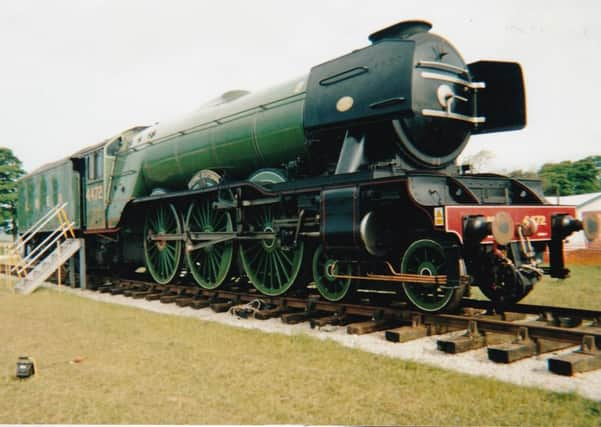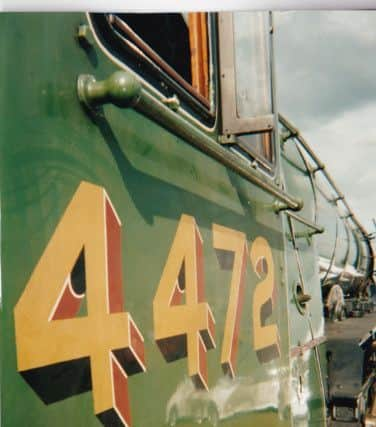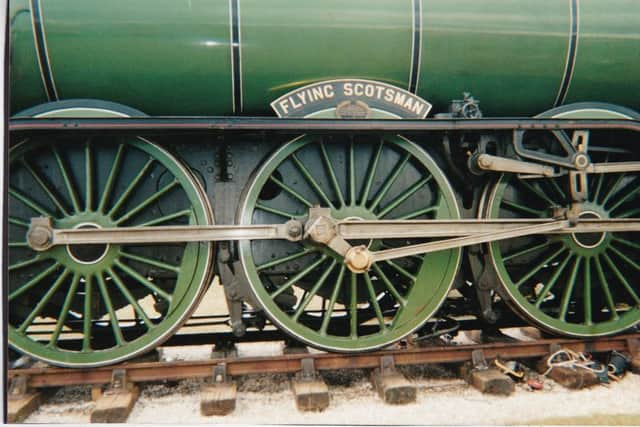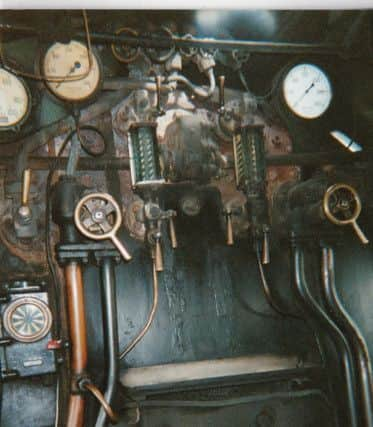FLYING SCOTSMAN: One man's vision which saved world-famous railway locomotive


My wife and I saw how the other half lived when Buxworth Steam Group took their steam roadshow to the Hurlingham Club, London. The unforgettable palatial meals served in Hurlingham Club’s staff canteen were occasions worthy to write home about.
In addition, each day we saw Concorde flying to America and returning at night.
Advertisement
Hide AdAdvertisement
Hide AdThe regular appearance for a whole week at the York Railway Museum was another highlight, but the appearance of the Flying Scotsman at Frank’s Hartington Moor Showground was mind-bending and an almost out-of-this-world experience.


READ MORE
It was obvious, by the number of people paying on the gate, that the Flying Scotsman was an attraction par excellence, both to those who had lived in the Age of Steam and those young enough to have missed it and now wanting to make up for those lost opportunities.


Frank’s son Tony, to his credit, took on the restoration of the Scotsman. The Flying Scotsman Association was founded and a magazine was produced.
Advertisement
Hide AdIn its first issue, published during the summer of 1996, Tony wrote: “It is almost with disbelief that I write the foreword to the first edition of The Flying Scotsman Association Journal because in many ways I have still to come to terms with the events of the last few months where from learning about the possible sale of the Flying Scotsman in January of 1996, I was drawn on through a series of remarkable events leading to my purchase of the engine from Sir William McAlpine and Peter Waterman.
Advertisement
Hide Ad“When I first visited the engine in the shed at Southall, my first instinct was that the engine had been waiting patiently for me to arrive. In some uncanny way I knew there and then that I would buy the engine and that I could be the person to restore it back to its former glory and there by bring pleasure to millions of people for many years to come.”
Tony completed the purchase on February 23, 1996. In January 1999, an editorial in issue number eight by David Ward read: “As the restoration reaches completion, it is appropriate to pay tribute to Dr Tony Marchington who has provided the vast sums of money to make it all possible.


“Three years ago No 4472 lay in pieces in Southall, thoroughly worn out, with no funds, or firm plans for the future. The best one could have hoped for at the time, is that it would be reassembled and repainted for static exhibition, or a volunteer organisation might restore it over a long period of time.
Advertisement
Hide Ad“The fact that Dr Marchington has provided funds to restore No 4472 to as near brand new condition as possible is, therefore, nothing short of a miracle in railway preservation. Not once has Tony complained that the standards being applied were too high or too costly. His only complaint is that the overhaul is taking to long.
“When No 4472 reappears after what is most certainly the largest and most expensive steam locomotive overhaul ever undertaken, many will be able to say I contributed, but none of it would have been possible without Tony Marchington’s vision and investment.”
Advertisement
Hide AdBy 2002 the restoration was complete and the Flying Scotsman was being brought by low loader, via a very circuitous route due to the length of the combined cab and loader and the various weight restrictions en-route from Southall, to the Marchington’s Hartington Moor Showground.


In 2006, the Flying Scotsman caught up us with in New Zealand. The Kingston Flyer is the New Zealand answer to the Flying Scotsman. It ran for 18 miles on a single track from below Queenstown on the South Island.
Advertisement
Hide AdTravelling in a motorhome down the side of Lake Tekapo our attention was drawn to a large mushroom plume of white smoke that suddenly appeared to our right. Needless to say we deviated to meet up with the plume.
We appeared to be the only souls on site. The Flyer and the carriages were in pristine condition. Then a lone figure appeared from behind The Flyer, proceeding to photograph every spot of grease, steam and speck of dust.
My opening gambit was “you must be a steam buff!” The the answer came “no, I’m into motorcycles, but if I arrive back in the UK without a comprehensive photographic record I’ll get at least 500 lines from my buddy!”
Advertisement
Hide AdSmugly, I countered with “Friends of ours in the UK own the Flying Scotsman”. The answer swiftly came back “you must know Alan Marchington then?” What odds would a bookie give on this chance conversation in New Zealand?
Advertisement
Hide AdApparently our new friend owned a vintage Bradshaw motorcycle and Alan, Frank’s son and Tony’s brother, also owned a Bradshaw. There were only about 250 made.


Alan knew where Bradshaw spare parts could be obtained, or replicated, hence the connection.
Sadly, the Kingston Flyer is awaiting its own Tony Marchington.
READ MORE FROM MEMORY LANE